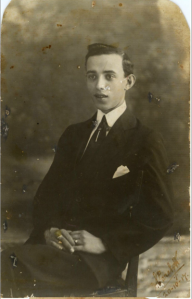The early recordings o Maltese folk and popular music are genuine and archaic documents of a musicological. and socio-political history we were totally unaware of until recently. The extent of the recording on 78rpm shellac records, and the musical variety is evidence of a once thriving musical and artistic scene.

One can distinguish two main categories of styles on these early recordings. The first, is that in the form of local folk song and chant; the ‘authentic’ hybrid of music prevalent in rural society, which reflects the yearnings and aspirations of a folk culture. Evident is the quality of the bards, singers and guitarists who execute these pieces with rich voices and skilful artistry. Most notable amongst these are characters like Xudi, Semenza and Manwel Cilia ‘Ta’Zabett’.

The other styles, such as tangos, fox- trots, and waltzes, reflect the imported influence in music, which resulted in numerous entertainers and dance orchestras, who provided music for entertainment for society in the frivolous 1930s. This cross-fertilization was probably due to the access to early radio, foreign records, and the ‘talkies’.
The lyrically woven and operatic style songs, show the influence and proximity of Latin culture on early 20th century Malta, especially Italian operetta styles, which were predominant in the capital city and amongst the upper circles of society.

Overall, there is a strong sense of musical and social identity present, mainly due to the use of the local language and dialect. This aspect is especially conspicuous for an era, which was facing socio-political clashes over language in education. It is interesting to note that, in actual fact, both Italian and English words are thrown in with the Maltese language, revealing the multi-faceted culture of the time.
 The recordings presented on these early discs of Maltese music, are invaluable documents of local music. As well as being the earliest recorded sound of the country, they attest to the variety of musical genre and activity available at the time. The concept of recorded and documented sound had its impact on musicians and composers; whilst providing them with an opportunity to make a living, it also created the impetus to produce for records under contract by the agents. It was also a unique opportunity for musicians and composers to have their works documented. Thanks to the release of these records, the music and works of these musicians and composers is now documented, and preserved for posterity.
The recordings presented on these early discs of Maltese music, are invaluable documents of local music. As well as being the earliest recorded sound of the country, they attest to the variety of musical genre and activity available at the time. The concept of recorded and documented sound had its impact on musicians and composers; whilst providing them with an opportunity to make a living, it also created the impetus to produce for records under contract by the agents. It was also a unique opportunity for musicians and composers to have their works documented. Thanks to the release of these records, the music and works of these musicians and composers is now documented, and preserved for posterity.
Malta’s Lost Voices Vol 1 is the first in a series of quality products of Maltese heritage music to be released by Filfla Records.
http://www.filflarecords.com







